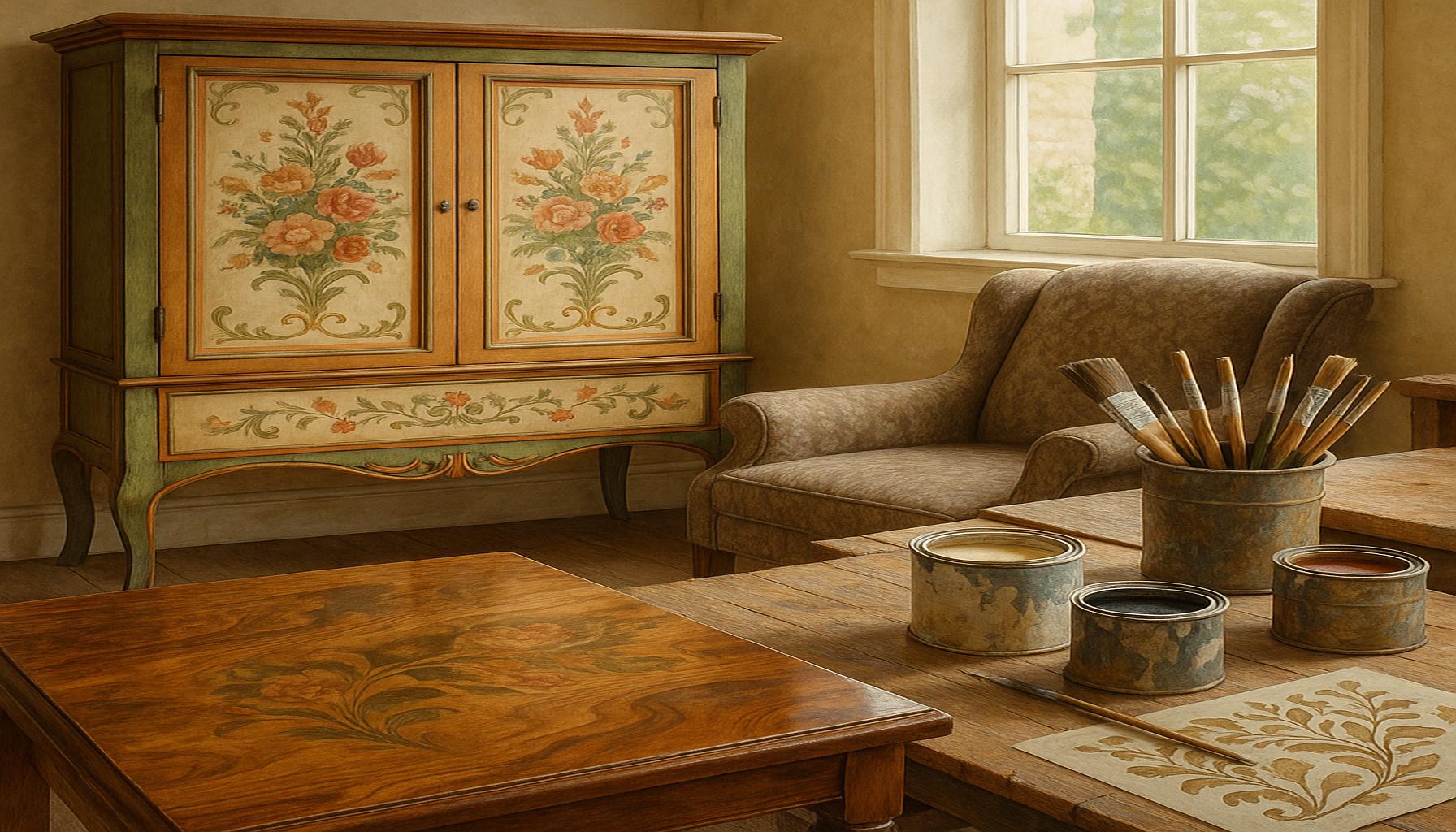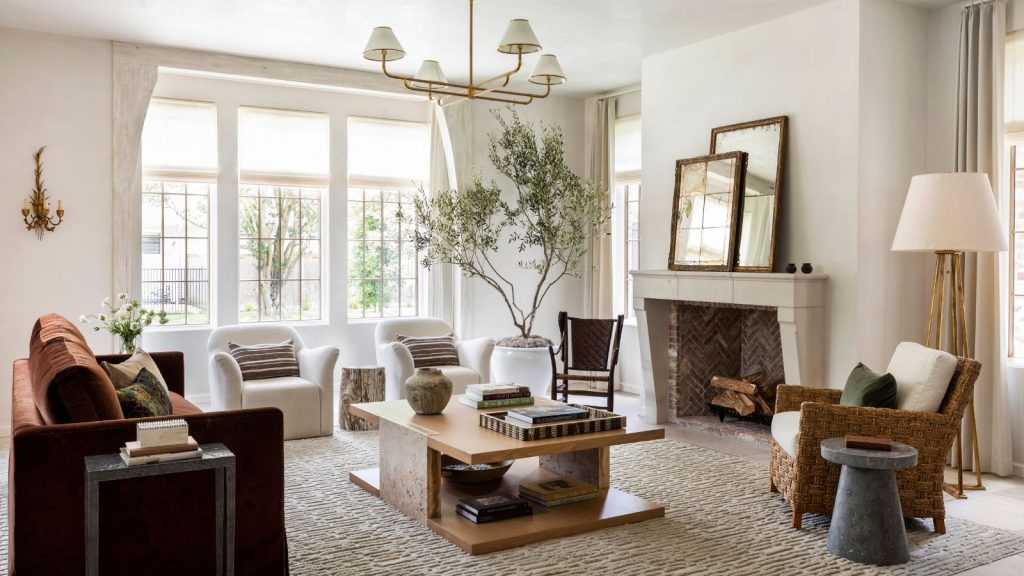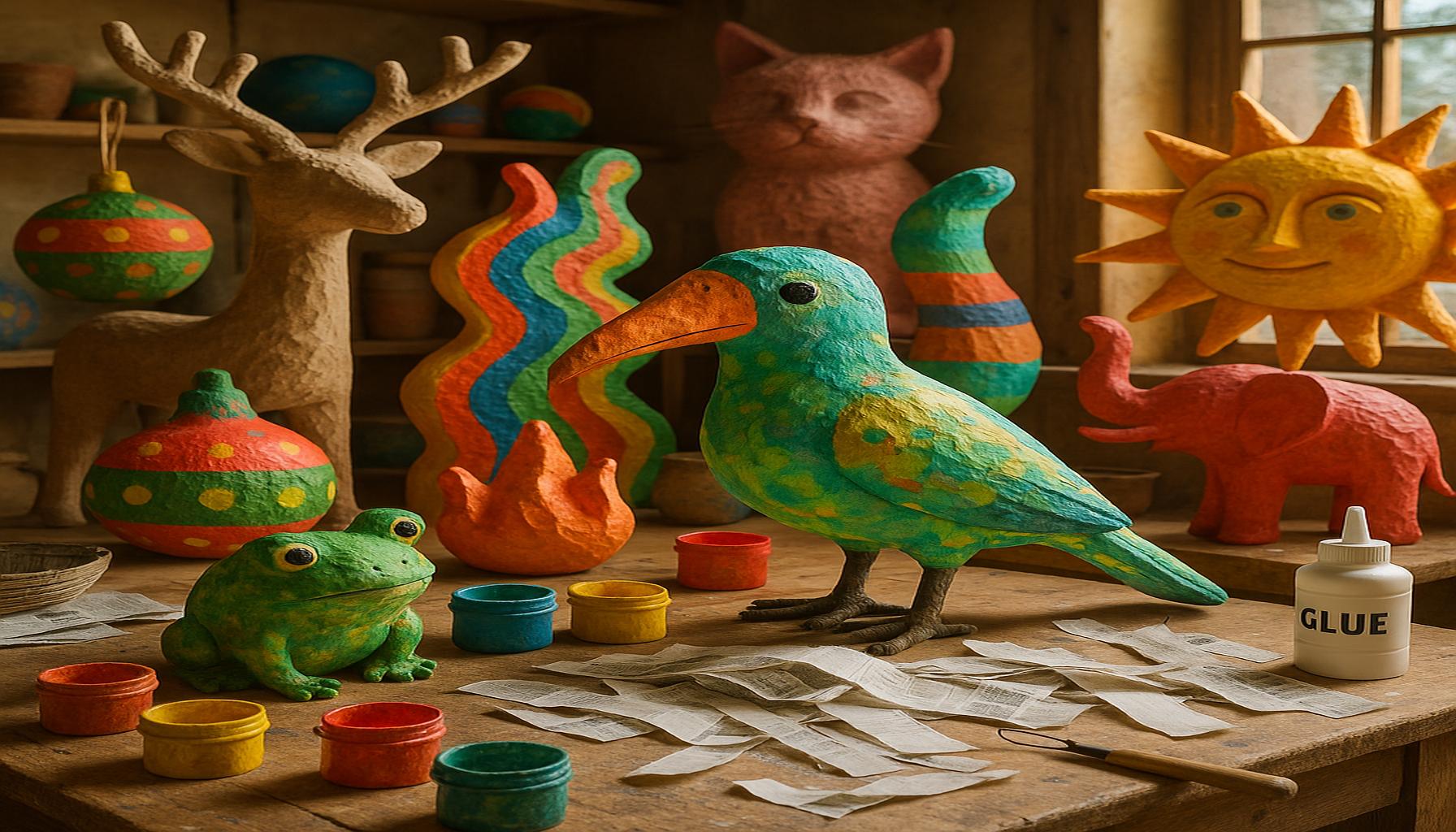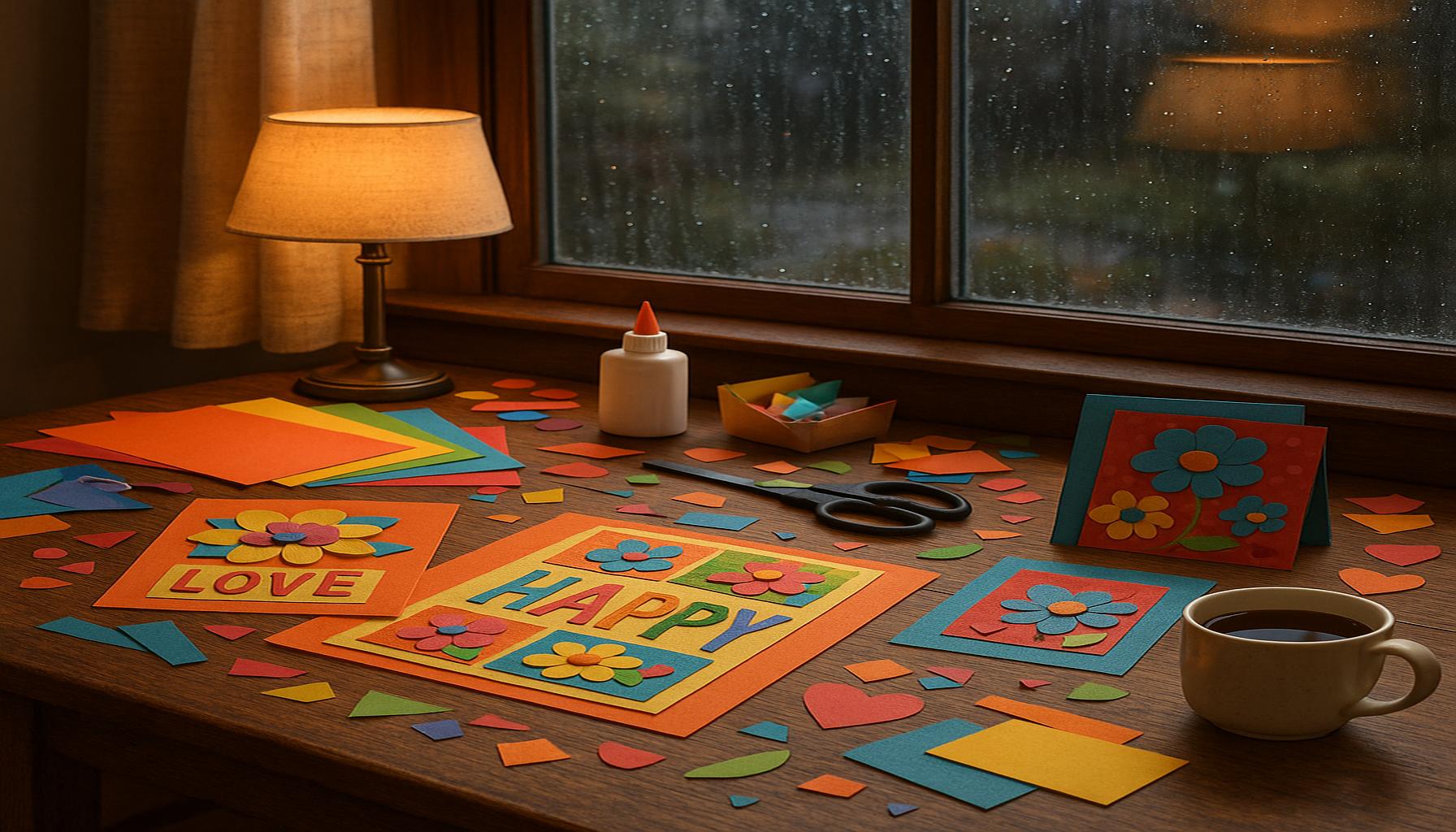Furniture Customization: Painting and Coating Techniques to Refresh Spaces

Unleashing Your Creativity with Furniture Customization
Refreshing your living spaces through furniture customization not only adds aesthetic value but also transforms your environment into a reflection of your personality. A growing trend in contemporary home decor, furniture customization allows individuals to redefine their surroundings by repurposing old items or creating new masterpieces from scratch. Whether you are an experienced DIY enthusiast or just starting to explore the dynamic world of furniture customization, there are a multitude of fascinating techniques and tools at your disposal.
One of the most popular methods for refreshing furniture is through the use of chalk paint. This paint is celebrated for its matte finish and ease of use, making it an ideal choice for those looking to achieve a vintage or shabby chic look. An excellent example of chalk paint in action could be seen when transforming an old dresser into a charming statement piece with pastel hues. Not only does this technique breathe new life into worn furniture, but it also allows for creative freedom in distressing or layering colors to achieve intricate designs.
In addition to chalk paint, acrylic paint is another versatile option. Known for its durability and bright pigments, acrylic paint can be applied to wood, metal, and fabric surfaces alike. This type of paint is perfect for crafting vibrant geometric patterns on a coffee table or rejuvenating a worn-out chair with a modern color scheme. Moreover, acrylic paints dry quickly, allowing for faster project completion, which is particularly appealing for those on a tight schedule.
Protect and Enhance with Coatings
While paint plays a vital role in customization, selecting the right polyurethane coating can enhance not only the color but also the longevity of your furniture. This clear finish provides a protective layer against scratches, heat, and spills, ensuring your revitalized pieces stand up to daily wear and tear. For instance, applying a glossy polyurethane coat on a newly painted dining table can elevate its appearance while safeguarding it against inevitable stains from family meals.
Spray paint presents another efficient option for achieving smooth finishes. Unlike brush painting, which can leave streaks, spray paint provides even coverage that is hard to replicate with traditional brushes. This method is highly effective for outdoor furniture as well. Imagine transforming a dull metal patio chair into a vibrant, eye-catching seat in just a few moments, making it an excellent choice for those looking to make quick changes to their outdoor spaces.

Getting Started
As you venture into the realm of furniture painting and coating techniques, it’s essential to equip yourself with the right tools such as brushes, rollers, drop cloths, and sanding equipment. Furthermore, understanding the preparation process—like cleaning and priming surfaces—can make a substantial difference in the final outcome.
By exploring innovative techniques in furniture customization, you can turn any dull space into an extraordinary one. With a blend of creativity and practicality, you can showcase your personal style through transformed furniture pieces that enliven your home environment. Embrace the possibilities that await, and allow your imagination to thrive in every brushstroke and layer of color!
DISCOVER MORE: Click here to explore watercolor techniques
Transforming Furniture with Creative Techniques
As the landscape of interior design continues to evolve, furniture customization has emerged as a compelling avenue for those looking to inject personality into their homes. The art of furniture painting not only allows individuals to personalize their spaces but also offers a sustainable option by giving new life to old or outdated pieces. From selecting the appropriate colors to mastering various techniques, each step in the customization process contributes to a unique masterpiece.
One of the foundational elements of furniture customization is the choice of paint type. Each type of paint has distinct characteristics that can influence the final look and durability of your project. Here’s a closer examination of some popular paint options:
- Chalk Paint: This become a favorite among DIY enthusiasts for its unique matte finish and versatility. Chalk paint adheres well to most surfaces without the need for extensive preparation, allowing for a quick transformation of furniture. Its ease of distressing also makes it ideal for those wanting a vintage appeal.
- Acrylic Paint: With robust color options and a quick-drying formula, acrylic paint shines when it comes to adding brightness to furniture. It works well on diverse surfaces and permits intricate designs and geometric patterns, making it a popular choice for modern furniture updates.
- Milk Paint: Often favored for its eco-friendly composition, milk paint can create a beautiful, matte finish. It is particularly suited for those interested in achieving a more rustic or historic look, as it often has a unique, textured appearance that can vary with application.
With the right paint in hand, the next critical step is the preparation of your furniture piece. Proper preparation can significantly affect the end result, ensuring that your hard work pays off. Begin by thoroughly cleaning your furniture to remove any dust or grease, then consider lightly sanding the surface for better paint adhesion. If you’re working with a glossy finish, applying a primer may also enhance the paint’s grip, ensuring a smoother and longer-lasting finish.
Finishing Touches: The Importance of Coatings
After painting, many enthusiasts overlook the importance of applying a protective coating. A high-quality clear coat can safeguard your masterpiece against wear and tear while enhancing its aesthetic appeal. Several options exist, each offering different levels of durability and sheen:
- Polyurethane: A common choice for its toughness and ability to create a durable barrier against scratches and stains, polyurethane comes in matte, satin, and gloss finishes, allowing you to customize your furniture’s final look.
- Varnish: Ideal for outdoor furniture, varnish adds a layer of water resistance. It also enhances the wood’s natural grain while offering good protection against the elements.
- Wax: This natural finish provides a soft sheen and can be an excellent option for low-traffic furniture. Wax requires regular reapplication but imbues pieces with a warm, inviting feel.
The combination of selecting the right paint and applying an effective coating not only elevates the visual appeal of your furniture but ensures its resilience over time. By taking these steps, you’re not just completing a DIY project; you’re creating a lasting piece of art that speaks to your individual style and taste.
| Advantages | Details |
|---|---|
| Enhanced Aesthetics | Using various painting and coating techniques can transform the look of your furniture, allowing you to create a cohesive aesthetic in your space. |
| Durability | Applying protective coatings enhances the longevity of your furniture, preventing wear and tear from daily usage. |
| Eco-Friendliness | Many modern coatings are low-VOC, making them safer for your home environment while also being environmentally friendly. |
| Personalization | Custom colors and finishes allow you to express your unique style, ensuring your furniture reflects your personality. |
Experimenting with furniture customization can lead to a unique living space that truly resonates with your personal style. Exploring various painting and coating techniques opens up endless possibilities. Techniques such as distressing, stenciling, or using chalk paint can provide a vintage charm, while sleek metal finishes can create a modern vibe. By refreshing your furniture with these methods, you not only breathe new life into your home but also create a space that feels entirely yours. Each choice, from the type of paint used to the application method, contributes to a tailored look that sets your interior design apart. With the right approach, your furniture can become a striking focal point that captures the essence of your home.
DISCOVER MORE: Click here to learn how photography can enhance your emotional well-being
Accessories and Techniques to Enhance Your Customization
While selecting the right paint and coating are vital steps in furniture customization, incorporating accessories and advanced techniques can further elevate your project. By blending various styles and elements, you can create a truly unique piece that stands out in your space.
Accessorizing Your Furniture
Once you have transformed an old piece with paint, the next step is to consider complementary accessories. Hardware, fabric, and decorative elements can all play a crucial role in enhancing the overall appearance of your newly customized furniture. Here are some ideas to inspire:
- Hardware: Swapping out knobs, handles, and hinges can dramatically alter the look of furniture. Opt for bronze, crystal, or even colorful ceramic options to add a distinctive flair. Vintage and antique shops often offer unique finds that can serve as conversation starters.
- Fabrics: If your furniture piece includes upholstery, consider updating the fabric to reflect your new design direction. Bold patterns, vibrant colors, or soft textures can breathe new life into an armchair or a sofa. Additionally, adding throw pillows or cushions can enhance both comfort and style.
- Stencils and Decals: To create visual interest, using stencils or decals allows you to incorporate intricate patterns or designs onto your furniture. This technique works particularly well in children’s rooms, adding a playful touch to dressers or toy boxes.
Innovative Painting Techniques
Going beyond the basic application of paint, several innovative techniques can yield stunning results. Exploring these can take your project from ordinary to extraordinary:
- Ombre Effect: Create a gradient finish by blending two or more shades of the same color, transitioning from light to dark. This technique works beautifully for dressers or cabinets, adding depth and visual intrigue.
- Distressing: Achieving a distressed look involves sanding down certain areas after painting to reveal the wood grain beneath, enhancing the vintage aesthetic. Using this method carefully can offer a modern shabby chic vibe to any piece.
- Sponging: Instead of fully painting a surface, the sponging technique uses a damp sponge to apply a lighter or darker hue over a base color, creating a textured appearance. Ideal for adding dimension, this technique can be particularly striking on furniture with intricate details.
Environmental Considerations and Sustainability
In addition to aesthetics, many homeowners are considering the environmental impact of their furniture choices. Opting for low-VOC (volatile organic compounds) paints and finishes not only ensures a healthier home environment but also aligns with a growing commitment to sustainability. This choice minimizes harmful emissions, making it a responsible option for those prioritizing eco-friendliness in their decoration.
Further, repurposing rather than discarding old furniture contributes not only to a more sustainable lifestyle but also allows you to infuse personal history and character into your space. Many people in the U.S. are participating in this movement, recognizing the value of their unique stories and memories tied to beloved furniture pieces.
Ultimately, the process of furniture customization through painting and coating techniques gives individuals the ability to not only refresh their living spaces but also to express their creativity. From strategic selections in hardware to employing artistic techniques, there is virtually no limit to the potential for personal expression in the art of transforming furniture.
DISCOVER MORE: Click here to learn about the evolution of digital art
Embrace Your Creative Journey
In conclusion, furniture customization through innovative painting and coating techniques provides an expansive canvas for creativity, allowing individuals to breathe new life into their living spaces. Among the array of customization options, techniques like the ombre effect—where colors seamlessly blend from one hue to another—can create a stunning visual impact in any room. Alternatively, a distressed look can evoke a farmhouse charm, making furniture appear vintage and inviting. On the other hand, applying a striking sponging technique offers a playful texture that can add depth and interest, transforming the mundane into the remarkable.
The transformation possibilities are vast and can be tailored to fit any aesthetic. Each method invites you to express your personal style, whether you gravitate towards contemporary minimalism or vibrant bohemian vibes. Additionally, incorporating thoughtfully selected accessories, such as new durable hardware or vibrant fabrics, adds the finishing touch to your customized pieces. Hardware, such as vintage drawer pulls or sleek cabinet knobs, can dramatically enhance functionality while enriching visual appeal.
The Sustainability Factor
As homeowners increasingly embrace sustainability, the trend of repurposing old furniture has gained momentum. This not only promotes environmentally friendly practices but also weaves personal history into your decor. For example, an inherited dresser can be revitalized with a fresh coat of paint and new knobs, allowing the piece to tell both a story and provide practical use. Each customized item becomes a unique conversation starter, blending history with modern design.
Whether you’re a seasoned DIY enthusiast or just beginning your journey, the concept of furniture customization can be both fulfilling and enjoyable. It encourages exploration of new techniques, engagement with your creative side, and the opportunity to reshape your home into a true reflection of who you are. So, gather your tools, unleash your imagination, and set forth on a transformative journey that enriches your surroundings while showcasing your unique style. The world of custom furniture is truly waiting for you to leave your mark.



